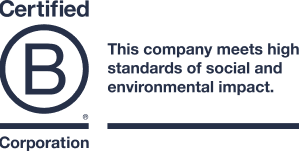Plastic straws are one of the most common items found in ocean trash, along with plastic bags, bottles, and cups. According to a study by the University of California, Santa Barbara, Americans use about 500 million plastic straws every day, enough to fill over 125 school buses. Most of these straws are not recycled or reused, but end up in landfills or the environment, where they can take up to 200 years to decompose. Plastic straws pose a serious threat to marine life, as they can be ingested, entangled, or injured by them. Plastic straws also contribute to the larger problem of plastic pollution, which affects the health and sustainability of our oceans and our planet.
In recent years, there has been a growing movement to reduce the use of plastic straws and replace them with more eco-friendly alternatives. This movement was sparked by a viral video in 2015 that showed a sea turtle with a plastic straw stuck in its nose. The video was filmed by marine biologists who were trying to remove the straw from the turtle’s nostril. The video showed the pain and distress of the turtle as it bled and cried. The video was viewed by millions of people around the world and generated a strong emotional response and awareness.
The video inspired many people to take action and join the anti-plastic straw movement. Some of the actions and achievements of the movement include:
- Individuals: Many people pledged to stop using plastic straws or switch to reusable or biodegradable straws made from metal, bamboo, paper, or silicone. Some people also started campaigns or petitions to urge businesses and governments to ban or limit plastic straws.
- Businesses: Many businesses, especially in the food and beverage industry, voluntarily stopped offering plastic straws or switched to alternative straws. Some of the major companies that joined the movement include Starbucks, McDonald’s, Disney, Marriott, Hilton, American Airlines, and Ikea.
- Governments: Many governments at local, state, or national levels enacted laws or regulations to ban or restrict plastic straws. Some of the countries that implemented or announced plastic straw bans include Canada, UK, France, Taiwan, India, and Australia. Some of the states or cities that did the same include California, New York City, Seattle, Washington DC, and Miami Beach.
The anti-plastic straw movement was successful in raising awareness and changing behavior among millions of people. It also created a momentum and a model for other environmental movements and campaigns. However, the movement also faced some challenges and criticisms. Some of the limitations and drawbacks of the movement include:
- Scale: While plastic straws are a significant source of ocean trash, they are not the biggest or the only one. According to [a report] by Ocean Conservancy, plastic straws ranked seventh among the top ten items collected during beach cleanups in 2017. The top six items were cigarette butts, food wrappers, plastic bottles and caps, plastic bags, plastic cutlery, and balloons. Plastic straws account for only about 0.03% of the total plastic waste in the oceans. Therefore, banning or reducing plastic straws alone is not enough to solve the bigger problem of plastic pollution.
- Alternatives: While some of the alternative straws are more eco-friendly than plastic straws, they are not perfect or accessible for everyone. For example,
- Metal straws can be reusable and durable, but they can also be expensive, hard to clean, or dangerous if swallowed or bitten.
- Bamboo straws can be biodegradable and natural, but they can also be prone to mold, splintering, or cracking.
- Paper straws can be recyclable and compostable, but they can also be soggy, weak, or coated with chemicals.
- Silicone straws can be flexible and soft, but they can also be non-biodegradable or contain toxins.
- Accessibility: While some people can easily choose to avoid or replace plastic straws, some people cannot due to medical or personal reasons. For example,
- People with disabilities or health conditions may need plastic straws to drink safely and comfortably.
- People with allergies or sensitivities may react negatively to alternative straws made from certain materials.
- People with low income or limited resources may not be able to afford or access alternative straws.
These challenges and criticisms show that the anti-plastic straw movement is not a simple or straightforward solution for environmental issues. It also shows that every action we take has unintended consequences that we need to consider and address.
At FiveADRIFT, we are a major advocate of using less plastic in the fashion, textile and logistics industry. We make beach towels from environmentally sustainable materials such as hemp and cotton that help remove plastic bottles from the ocean. We also care about how our products are packaged and shipped to our customers. We use eco-friendly packaging materials such as paper or cello tape, cardboard boxes, and kraft paper filler.
However, we also recognize that our actions are not perfect or without trade-offs. We are constantly evaluating our decisions for better options and looking for ways to improve our sustainability and impact. We are always open to feedback and suggestions from our customers and stakeholders. We also support and collaborate with other environmental movements and organizations that share our vision and values.
We hope that this blog post has given you some insights into the history and impact of the anti-plastic straw movement, the need to reduce single-use plastics, and the unintended consequences of our actions. We also hope that you will join us in our mission to make our oceans plastic-free and our planet healthier. Together, we can make a difference for a better future. 😊


